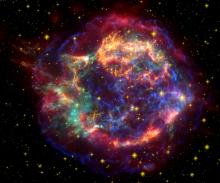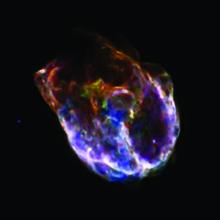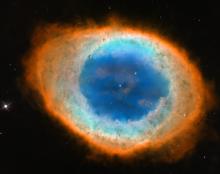Listen to today's episode of StarDate on the web the same day it airs in high-quality streaming audio without any extra ads or announcements. Choose a $8 one-month pass, or listen every day for a year for just $30.
You are here
Making Carbon
A couple of bright stars with dead companions arc to the right of the Moon at midnight, and stairstep to the lower right of the Moon at first light.
Procyon is the one closer to the Moon, while Sirius is the brightest star in the entire night sky. Both stars are big and bright on their own, and they’re quite close by. And both of them have a “dead” companion — a white dwarf. Such stars are the leftover cores of once-normal stars. They’re small but hot, and they no longer produce the fusion reactions that create new elements.
The Big Bang created hydrogen, helium, and a smattering of a couple of other elements. Every other element was created by stars. That includes the oxygen we breathe, the iron in our blood, and the carbon that’s the basis of life on Earth.
Most of the carbon came from stars that were like the Sun. As such a star dies, it sheds its outer layers, leaving only its dead core — a white dwarf. The outer layers contain elements created during the star’s lifetime — including, in some cases, carbon.
A recent study concluded that there’s a “cut-off” line between stars that expel carbon into space and those that don’t. That line is about one and a half times the mass of the Sun. Stars that are born that big blow carbon out into space. Stars below that mass don’t. If confirmed, that means the Sun won’t pump out much carbon when it dies — so it won’t contribute much to possible life elsewhere in the galaxy.
Script by Damond Benningfield





